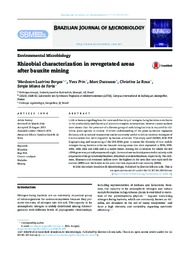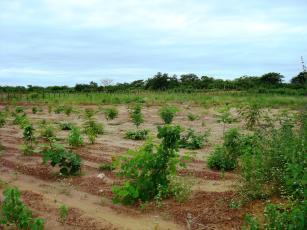Rhizobial characterization in revegetated areas after bauxite mining.
Rhizobial characterization in revegetated areas after bauxite mining.
Author(s): BORGES, W. L.; PRIN, Y.; DUCOUSSO, M.; LE ROUX, C.; FARIA, S. M. de
Summary: Little is known regarding how the increased diversity of nitrogen-fixing bacteria contributesto the productivity and diversity of plants in complex communities. However, some authorshave shown that the presence of a diverse group of nodulating bacteria is required for dif-ferent plant species to coexist. A better understanding of the plant symbiotic organismdiversity role in natural ecosystems can be extremely useful to define recovery strategies ofenvironments that were degraded by human activities. This study used ARDRA, BOX-PCRfingerprinting and sequencing of the 16S rDNA gene to assess the diversity of root nodulenitrogen-fixing bacteria in former bauxite mining areas that were replanted in 1981, 1985,1993, 1998, 2004 and 2006 and in a native forest. Among the 12 isolates for which the 16SrDNA gene was partially sequenced, eight, three and one isolate(s) presented similarity withsequences of the genera Bradyrhizobium, Rhizobium and Mesorhizobium, respectively. The rich-ness, Shannon and evenness indices were the highest in the area that was replanted theearliest (1981) and the lowest in the area that was replanted most recently (2006).
Publication year: 2016
Types of publication: Journal article
Unit: Embrapa Amapá
Related content
Observation
Some of Embrapa's publications are published as ePub files. To read them, use or download one of the following free software options to your computer or mobile device. Android: Google Play Books; IOS: iBooks; Windows and Linux: Calibre.
Access other publications
Access the Agricultural Research Database (BDPA) to consult Embrapa's full library collection and records.
Visit Embrapa Bookstore to purchase books and other publications sold by Embrapa.


